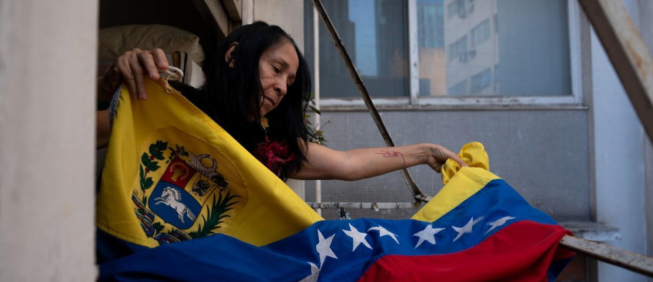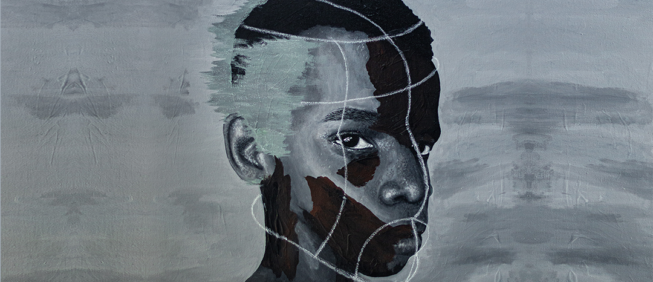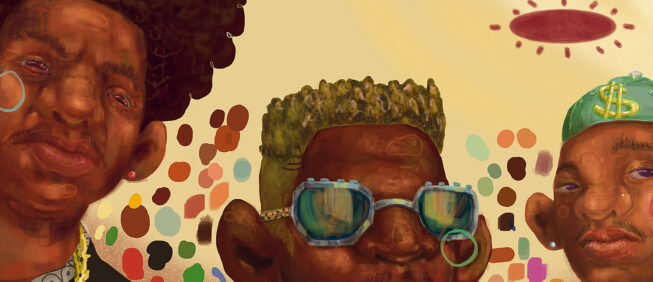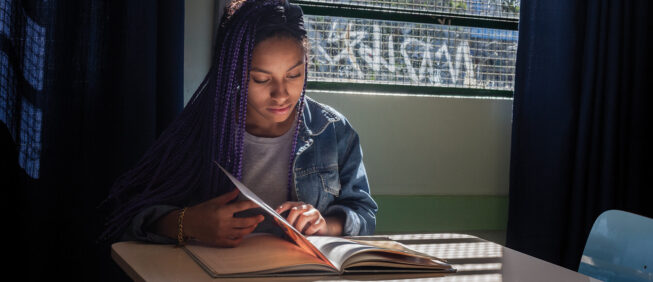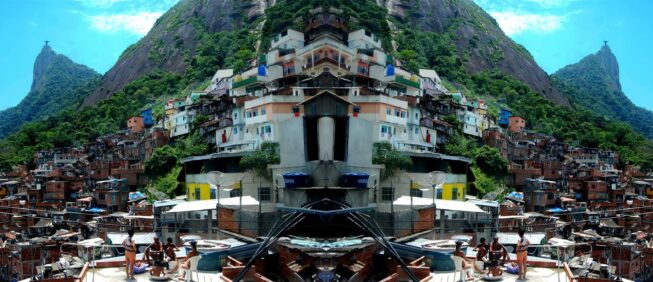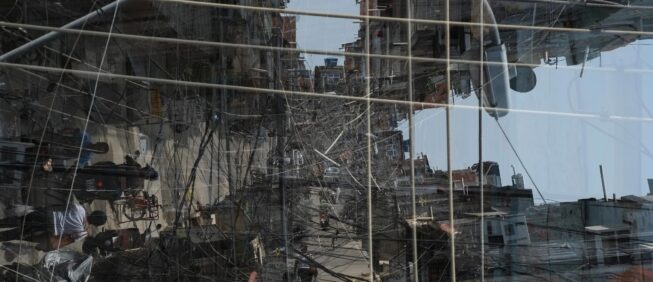Kariri History: An Arrow to Illuminate the Heart
A dive into the family memories of self-recognition as the Kariri, a nation with territory from Bahia to Piauí
By Raquel Paris
| Brazil |
22 de August de 2020
translated by Stephanie Reist

Praise the caboclas1Caboclo and it’s feminine form cabocla may refer to an indigenous person or a person of Portuguese and indigenous ancestry. However, within the umbanda and candomblé religions, they are entities, usually represented by indigenous people, known for their sound advice and knowledge of medicine. of the forest!
Praise Iracema! Praise Jurema!
Praise the caboclas of the forest Iara, Jussara, Jupira, and Jandira!
Ponto das caboclas - Camila Costa
Combing through the past has been like collective stickers in an album as a hobby when you were a kid. There was always one, two, or three missing; these very rare and unique ones were never found, so there was always a blank white spot when you went through the pages. But that was no reason to give up. I’d open new album, putting together new memories.
I was born a Cratense2Person from the city of Crato in Ceará.. My dad is named Francisco Alves Rocha and my mom Terezinha Arraes Alves Rocha. I am proud that the Araripe region crossed through me from its Pernambucan and Cearense sides. Another point of pride, this one transcendental, is being a semiarid3A vast region in the Northeast of Brazil known for seasonal droughts and its blends of indigenous and Afro-descendant cultures. woman. Many years later, as a term of endearment from very dear friends, I was given ‘Paris,’ my social name, but this is another story.
For the whole Brazilian Semiarid region, indigenous people claim their existence in the face of a systemic project of erasure
Being born in the 1980s in the city of Crato meant learning three fundamental things: first, that we should avoid having too much contact with the city and people of Juazeiro do Norte, since, after all, it was known that Juazeiro was the land of ignorant people and Crato, that of the illustrious.
Second, that in this land there were no indigenous people. This was a very old story, about a people called Kariri that had inhabited these lands and that had been killed by invasions into the territory. Water under the bridge.
And finally, but no less important, that under the Igreja da Sé church there is a whale.
Today I contemplate how coloniality’s strategy of erasure functions from Bangladesh to Crato. Genocide the indigenous population, twist the narratives, and assimilation strategies to decree their corporal and symbolic disappearance; after all, the dead cannot claim land. I believe that who saved me from erasure was the force, the energy emanating from the Chapada4Vast elevated plateau in the Brazilian highlands do Araripe, a compass oriented towards affection and spirituality that I carry in my chest, and Campo Alegre, a homestead at the base of the mountain range where I spent my entire infancy and youth. The place where I learned how to respect the caatinga5A massive, semi-arid biome in Brazil Northeast, known for its long draughts and shrub-like desert vegetation , to live with drought and to celebrate the rain.
I tracked down the Kariri recently. There were many years that I asked myself who this face was affiliated with, this skin tone, my thick hair. Where would the women who look like me be? Where would the women who think and feel like me be?
Slowly and in a very intuitive way, I started asking myself and everyone around me questions. With my family, I wasn’t able to get very far. Unfortunately, the older people, like grandfathers, grandmothers, and aunts, had already passed. I understood that this search could not be carried out simply by historiographic means, not after this great blaze devastating memories. I needed to trust my intuition, to learn how to read the silences of the unsaid and speaking figures.
Thus, I first let myself linger in front of the mirror, acquiring the courage and searching for the dignity that had been denied me. Courage to believe what ancestrality was saying through my face and skin. Then, I contemplated my life, my own memories. What I saw was my brothers going to the foothills to hunt, a family that produced many of its crops during the rainy season, that organized itself matriarchally, and that is devoted to nature and its protection.
Another element is very symptomatic: the internal silencing strategies. As my mother told me about my older aunts: “Things happened and you kept quiet.” That must be why when my Aunt Cezídia told me our family origins, she mentioned an ancestor who was just known as a “moreno6“Moreno” means brown, usually due to miscegenation. ,” a man without a name and without a face that arises like a cloud in our family narratives.
These roundabout, loose pieces of information, said in an unimportant way, emerged for me as a symbol of the erasure undergone by many Kariri families, especially those that remain on the outskirts of the city. Families that, due to mandatory poverty, often turned to negation to diminish the weight of prejudice and permit a less grueling life.
My Aunt Cezídia and her sisters Cecília and Isabel were born and lived their entire lives in the city of Crato. First they lived on Pedra Lavrada Street, today Pedro II street. The street was named Pedra Lavrada because it was near the banks of the Granjeiro river, which today has been degraded and transformed into a sewage canal. Later they went to live on what today is Nelson Alencar Street but was the edge of the city back then. It was my aunts, as my dad told me, who would invite cabacal bands7Traditional music from the Ceará region. into their home, who had plants and spirituality as companions, who would sit me down on the floor and feed me with their hands. Aunt Cecília and her pipe.
Bringing together these other memories was not easy. I had to develop a familiarity with concepts and words that seem more like tongue-twisters — “epistemicide,” “ethnocide” — though without them I never would have understood how coloniality is a machine that grinds up people and identities. I also understand that, by inhabiting a female body penetrated by machismo, racism, patriarchy, the level of insecurity in this process could be paralyzing. There were many tears. I asked myself if I wasn’t imagining things, inventing all of this. I asked hard questions: could it be that in my need for feeling welcomed I had forced a sense of ancestrality? It has happened many times. But as a good friend told me: there is no way to go through this process without tears. It’s hard, but when, at last, we crown ourselves, when, at last, we allow ourselves to incorporate our dignity and announce our ancestrality and to be welcomed in our humanity and singularity, it really is a cure. A rebirth.
Each person is going to have their own process. They’ll use their skills, their wisdom. The most important thing, in my opinion, is to put in check the separatist view of coloniality, which has the audacity to classify, determine “true” indigenous people. After all, if we dig deep into how the process of invasion and occupation of the Brazilian Semiarid region took place, taking into account the project of genocide and assimilation of its indigenous population, many keys to perception begin to arise.
Questions like, who makes up the ethnic matrix of the Semiarid region? Where do the people we call caboclos, sertanejos [from the sertão, or outback], vaqueiros [cowboys or buckaroos], beatas [blessed women], parteiras [midwives], rezadeiras [female prayer-healers] come from, those women and men who were embittered by the mandatory poverty of the peripheries of cities? Our Caririense culture and its specificities descend from whom?
The history of the Semiarid region and its indigenous people still remains to be told. There are hundreds of years of erasure and negation. But, throughout this whole territory, family members interrupt the silence and claim a voice. Dona Tereza Kariri let out her call for freedom in the 1980s and with her a line of Kariris, Potiguaras, Tabajaras. I am new to this journey; and I invite you to join this line. After all, we did not disappear; we’ve always been here and we are just (re)beginning.
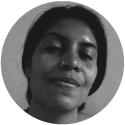
Raquel Paris | Brasil |
Journalist and Communication Coordinator at UNIperipheries
raquel.paris@imja.org.br